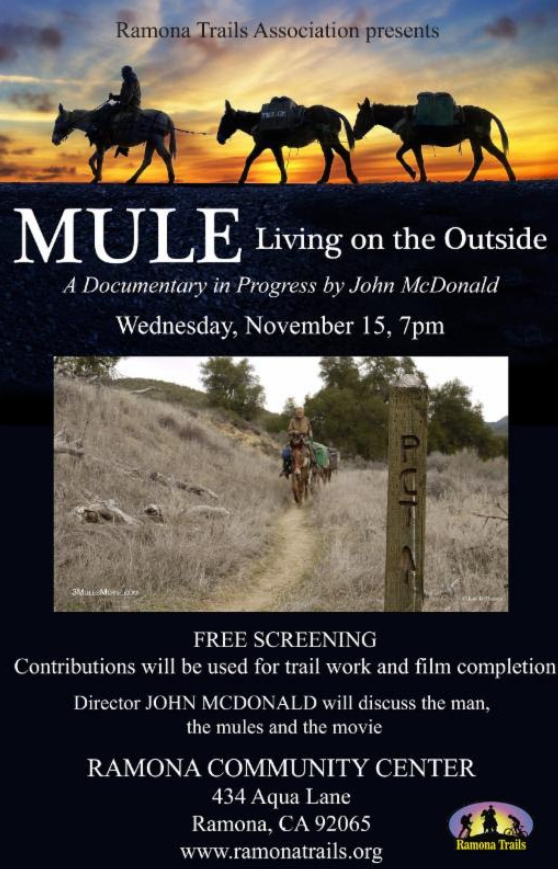 |
| Dance with me in the witches’ grove! Bwah ha…ha…er…. Well, okay, if you’re not so into that, I’ll take an apple instead. |
It was a wonderful afternoon–about forty “goat curious” people like me showed up. Gloria and Steve’s goal in this, as in many of their activities, is to build community. They want more goat owning neighbors. They want everyone to be as excited about goats as they are.
Gloria also said that when she got her first goats, she didn’t know any goat keepers. She knew nothing. Everything she read on the Internet contradicted and confused her. The goat message boards were full of scary stories. She wants people to know that it’s not hard to keep goats. A lot of it is common sense. Good management goes a long way toward preventing the situations that lead to the scary stories you read on the message boards. As a beginner, what you really need is other goat keepers you can call on, and watch, and learn from. This is why she and Steve are spreading the good word–they want to build community–so local goat keepers can support and educate one another
Gloria produced a beautiful handout which she has given me in PDF form to share with you all out there in Internet Land. Download it here. It’s a great overview of the basics, with a list of resources at the end. It does focus on goat-keeping in the Los Angeles region, but it will be useful no matter where you live.
Lots of goat porn to follow, interspersed with some of my notes.
 |
| Steve and Gloria tellin’ it like it is to the goat curious. Steve is wearing his Altadena booster shirt. Altadena rocks! And Gloria is in her Backward Beekeepers sweatshirt, which is the fashion statement of choice in these parts. |
Why should you keep goats? Well, for the milk, of course. And the cheese–which is milk’s higher purpose. In an urban area (at least in this part of the world) it can be nigh near impossible to lay your hands on fresh, organic raw milk. If access to that kind of food is important to you, you almost have to be DIY. Did you know that a good milk goat can give a gallon of milk a day?
Then there’s the ethics. As many of you know, Erik and I stopped buying eggs at the supermarket because we couldn’t support the egg factories anymore, especially once we learned that “cage free” and “free range” are just marketing gimmicks. We started keeping hens to sidestep the insanity. If we had the room, we’d keep goats in a heartbeat, for the same reason. The industrial milk business is not something we want to support. We use very little milk, and the milk we do use is goat’s milk.
Beyond this, there’s pure pleasure. Believe us, fresh goat’s milk from a well run creamery does not taste “goaty.” Nothing can compare with fresh, raw milk from animals well loved and fed and carefully milked.
Gloria also points out that for her, goat keeping provides an almost mystical connection to our ancestors, a reconnection to this ancient, ancient human activity of caring for milch animals. Again, like keeping chickens, keeping a few goats was once normative. Well, it is still is normal in a lot of the world–but here and now, it’s exotic, an almost forgotten art. And that’s a shame. Goats are wonderful creatures.
 |
| Enter the paddock! Goats are escape artists, so gates like these need to be secured–carabiners work well |
 |
| A milking station elevates the goat and provides snacks, which are a great incentive toward cooperation. |
 |
| Look at that foam! A good dairy goat can give a gallon of milk a day. Steve and Gloria milk their goats twice a day. Once a day is acceptable, too, but twice a day increases the yield by 20%. |
 |
|
| Meet Mint. She’s thirsty after being milked. |
 |
| Spontaneous still life: hay hook and a green egg |
 |
| If only my kitchen were so clean. |
 |
| I admit I was kind of getting off on all the stainless steel. |
 |
| If you have goats, even just a couple, you’re going to have plenty of milk. What do you do with it? |
 |
| This is their first aid kit for the flock. It’s pretty straightforward. Stuff for wound care, charcoal paste for poisonings, an epi pen for allergic reactions, and antibiotics for serious emergencies. The most important item in here may be the thermometer, which is an important early warning device. |
 |
| Sometimes life is just pretty |
 |
| Did I mention these are Nubian goats. Their milk has the most butterfat for any goat this size. |
 |
| This is my new best friend, Dot. The sweetest kid in the world. She followed me around like a puppy asking to be scratched and giving me the big eye treatment. I was seriously tempted to stuff her in the hatchback and make a getaway. |
 |
| Hay, nice manger! |
 |
| Dot is shaking her head, saying, “No, you cannot capture my cuteness with your tiny box. Put it away and pet me!” |
 |
| A milking goat drinks 5 gallons a day. This system refills automatically, so Steve and Gloria know their goats will never run out of water, even if they get stuck somewhere and can’t get home to refill. |
 |
| A log pile provides entertainment for busy goats. So do children. |
 |
| Goats and chickens get along well, but goats will eat all of the chickens’ feed, so you have to protect those areas. It’s very bad if a goat is allowed to gorge on large amounts of grain–it can kill them. Yep, they can digest oak branches but grain is a problem. It turns septic in their stomachs. |
 |
| This kid got up on the log pile and started posing. She’s Dot’s sister. |
 |
| This is my wistful look. |
 |
| Did you want a profile? |
 |
| I pulled back to capture the nobility of her pose. |
 |
| Seriously. Can we just bronze it and put it in a park? |
 |
||||
| All hail our Caprian overlords. |
 |
| Happy Halloween everybody! (Photo courtesy of Gloria Putnam) |












Thanks! Dairy goat keeping was my topic of inquiry this past weekend (I’m always researchers some new homesteading topic), so I’m excited to read this post today!
Omg sooo cute. Although the little miniature potbellies goats are the cutest, I think.
If you are keeping goats for dairy what do you do with the kids? I know commercial dairies will not keep the kids because they reduce the amount of milk you get from the mama. And, if you keep the kids, how do you handle flock management? If you want milk every year and the mama has 2 babies a year, then your flock can quickly outgrow a backyard homestead.
Honestly, I like the thought of goats but I don’t see a good way to provide for the kids. I think most people sell them for meat and I don’t think I would be ok with that.
You should look into raising Nigerians. They are much smaller, requiring less space, less feed and less water and yet give a respectable amount of milk (several quarts a day).
We raise African Pygmies. They aren’t a dairy breed but we milk them anyways. We get 1.5-2 quarts a day, which is more than enough for us. Plus they have a really high butterfat (6-9%) which makes their milk extra sweet and creamy. Bonus is that their milk, unlike other goat milk, separates so we can skim the cream.
@Zebra: Glad to be of service!
@Sara: Yes, the truth of all dairy is that a female must become pregnant to produce milk (in goats the milk can keep coming for two years (or more so some stories say–it seems to have much to do with individual genetics) after kidding. Gloria and Steve let their kids wean naturally with their moms. They still milk the moms–even if they only get a few ounces. This helps keep the moms in milking practice and helps keep them “fresh” (in milk) whether the kids are nursing a lot or no.
And yes, this does give the home dairy a conundrum–where to put all the goats? Boys usually become meat. I remember when I figured that out about cows–quite the “oh, duh!” moment for me–and I was almost 30 yrs old! 🙂
The girls, of course, are wanted and can be sold into new homes. I don’t know if this is true nationally, but here we use goat herds for weed abatement on the hill sides. Extra goats, male or female, might find work in one of those operations.
@Rachel: Yes! Little goats=less feed, less space, less milk (because really, what are you going to do w. a gallon a day if you can’t sell it?). All good things.
I just took a class on raising goats in the city yesterday, so I loved seeing this post today!
I’m also looking at keeping goats. Nigerians or African Pygmies, because they’d be easy to house without breaking a sweat. I love Nubians, and had a neighbor who raised (and walked like dogs!) his Oberhaslis, when I lived in Berkeley, but the wee goats produce a lot of milk for their size, and it’s not like I’m looking at making huge wheels of cheddar 🙂
That anonymous comment above is from me, Kelly aka Mrs. Homegrown. I don’t know why it came out that way, or if this one will register as anonymous too!
I just finished working at a farm’s petting zoo (for their October pumpkin picking event) and I just fell in love with the goats there. It was fun watching them over a month and seeing their different personalities (and what personalities they have!). There was even a mini goat soap opera at one point, when one nanny goat was trying to steal the billy of another nanny (those are the right terms, right?). It was very dramatic. This post is well timed, as I kind of miss those cuties.
P.S. See you guys tomorrow for the fruit tree class!
Dot’s sister sure is a looker! I love their lop ears.
And today’s not even goat day for me, I gotta move the unruly brutish meat chicks outside because they keep hopping out of the brooder and sneaking up on Lucy my cat; she’s a very even-tempered lady, but peepers and chickens scare her.
I noticed that many of the goats in the pictures still have their horns. We’re slowly re-fencing our pasture in the hopes of having dairy goats within the next 2-3 years, but the question of de-horning is one that vexes us. Neither my wife nor I think we’d be capable of doing that to an animal even if we believed if was in the animal’s best interests. I think we could probably get rid of the male surplus without too much difficulty, but it’s the female surplus that worries me: all American dairy goat breeds have hornlessness as part of the breed standard, so if we wanted to sell, for instance, surplus standard Nubians, they would have to be dehorned. We’ve discussed the problem with a few goat owners, and they all concur that horns as such are not a problem as long as you limit the number of males and don’t put yourself into conflict with the goats, but no one has a solution for the female excess.
Do you happen to know how Gloria and Steve (or any other goat owners in your circle) handle this? Thanks!
@Chris: Gloria and Steve did talk about dehorning. They did it to their first pair of kids, and everyone, goats and humans, were so traumatized that they decided not to do it again.
Basically they said there are a lot “shoulds” in the goat world, but as they’ve gained experience they’ve learned to trust their instincts and sometimes take the less trodden path. A lot of those decisions have to do with a willingness to commit to some serious husbandry.
For instance, they’ve been treating mastitis through herbs and constant milking instead of antibiotics. This was scary at first, because everyone said “you have to treat with antibiotics!” and they wondered if they were doing the right thing. But it worked for them, so now they’re confident that they will keep doing it. It is, needless to say, a *lot* more work than a shot, but they think its worth it.
Dehorning is another of those things, one of those “shoulds”. Interestingly, one purpose horns have is as a cooling system for the goats. Lots of blood flows through them. They don’t want their goats to lose that advantage because it gets quite hot where they live. Their herd is happy and friendly as a bunch of golden retrievers, and they have plenty of space, so aggression is not an issue. One potential issue they noted was fencing–horns can get stuck between fence slats, and that’s very dangerous–it can lead to broken necks. But their fencing is not built that way, so it’s not a worry for them. They did not address resale issues, because as of now (I think) they’re keeping their females. I think they’d tell you it is hard decision, very individual, but if your gut tells you to do it one way, do it. You can make it work.
I’m very, very fond of goats. But I just can’t handle another 4-legged critter to take care of (let alone 2-4). But I can watch wistfully.
@Chris: Regarding fencing, just fyi, they did say that you need 6 foot fences if you have males and females, because the females jump the fences to get to the males and can tear their udders on the way over. They have 4 foot fences, but they don’t have males, so no one is jumping. Mini goats are fine w. 4 foot fences.
Maybe I’m too much of a farm girl, but I would have no problem butchering the babies. After all, the meat from that would offset some of the extra costs in getting the fresh milk.
Thanks SO MUCH for this – I was just saying today that I want goats, but I can’t have them . . . yet . . .
I wish I’d known about the workshop – I would have been there for sure. More and more, I want a farm . . .
The same thought was going through my head about the clean kitchen. I want/need/love stainless steel pots.
I really knew things about raising chickens, but I awoke in a nightmare and a cold sweat after reading internet “musts” about chick raising.
There would be no problem with slaughtering the males, but I am not slaughtering anything myself.
Friends of ours had goats loose in his yard. His parting remarks would be to come over sometimes and visit/play with the kids.
Very good pictures and facts I did not know…five gallons of water!
Kelly, I want to make an addition to your comments on our fashions: Steve’s very stylish belt, made right here in Altadena, from California Bohemian Leather!
Also, I want to add something to Kelly’s comment about our luck treating mastitis without antibiotics. We have only had 1 goat get mastitis, and only once. So in that case, we treated her successfully without antibiotics, and given that experience, I will be more confident in the future to follow the same path if one of the girls gets an infection. But healthy goats in general should not get infections—I didn’t want any readers to think this was a regularly occurring issue.
Thanks for a great piece, Kelly! Brin is still asking why you wouldn’t dance with her. You’ll need to come back.
I’m sorry I missed this. I’ve been goat crazy for a couple years. I’m happy to hear there are already goat people near LA
Oh I love this post! Thank you for sharing all the fabulous pictures and information. I can’t have goats where I currently live but it is my dream/plan to move within the next 3 years or so and have a little homestead with goats and chickens. Thanks again for the great photos of the cute goats!
@Mariposa Creamery: Thank you, Gloria, for both the compliment and the clarification. Thank you even more for giving your time and hosting such a fantastic event!
I wonder if anyone has been busted in LA for improper goat keeping, I don’t have 35′ away from any dwelling but some nigerian dwarfs sound neat.
How do goats & dogs get along, I wonder?